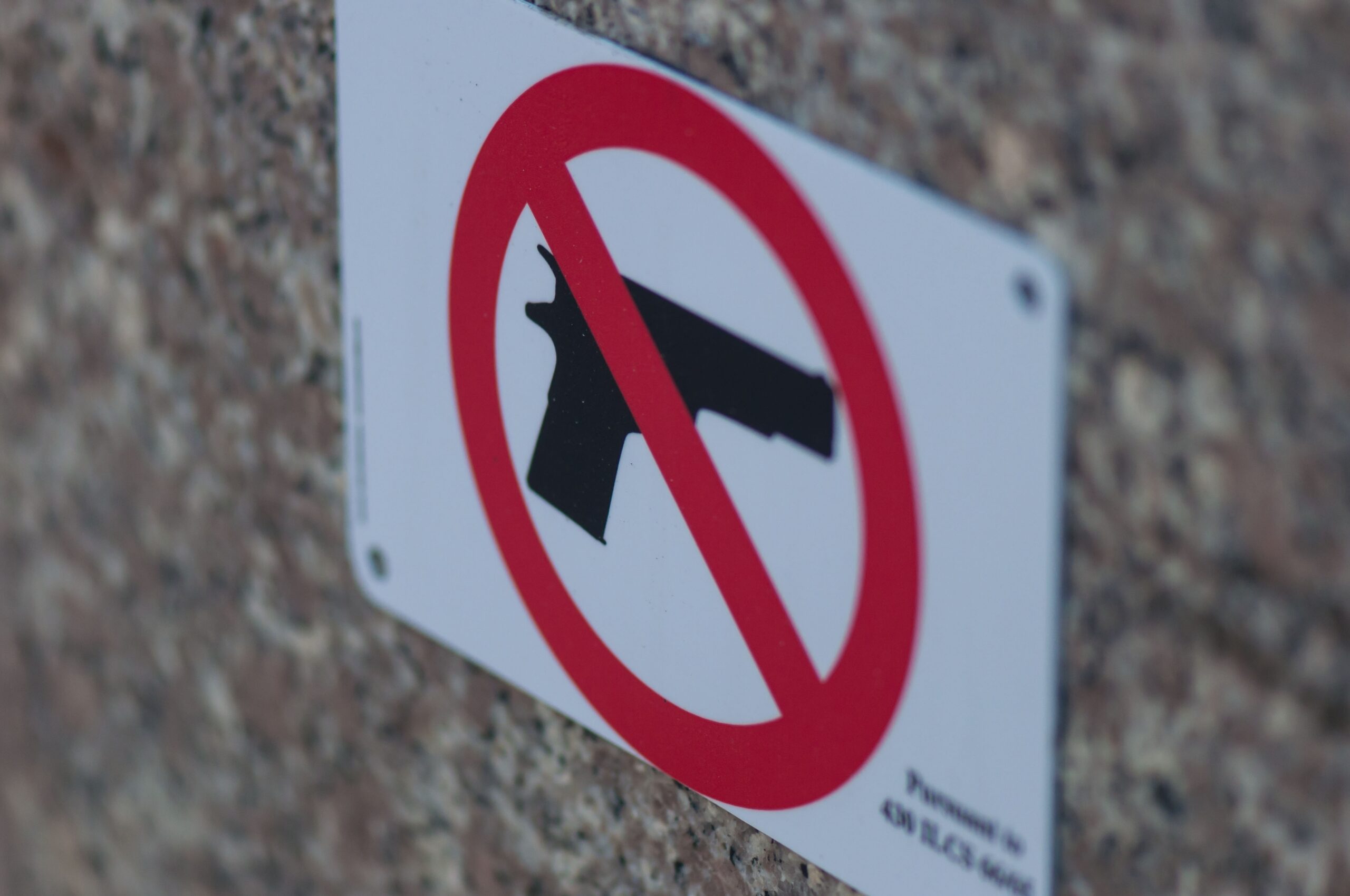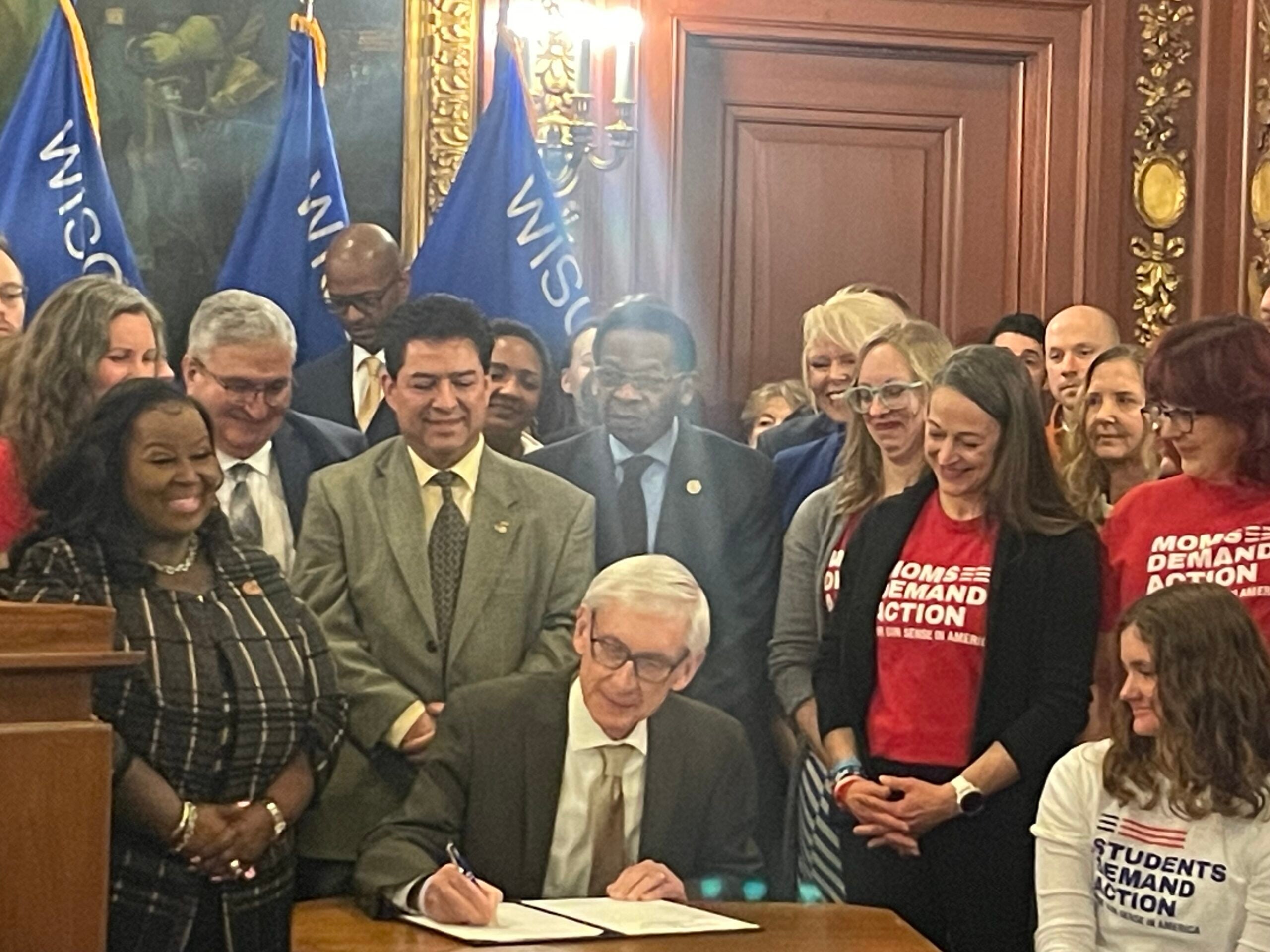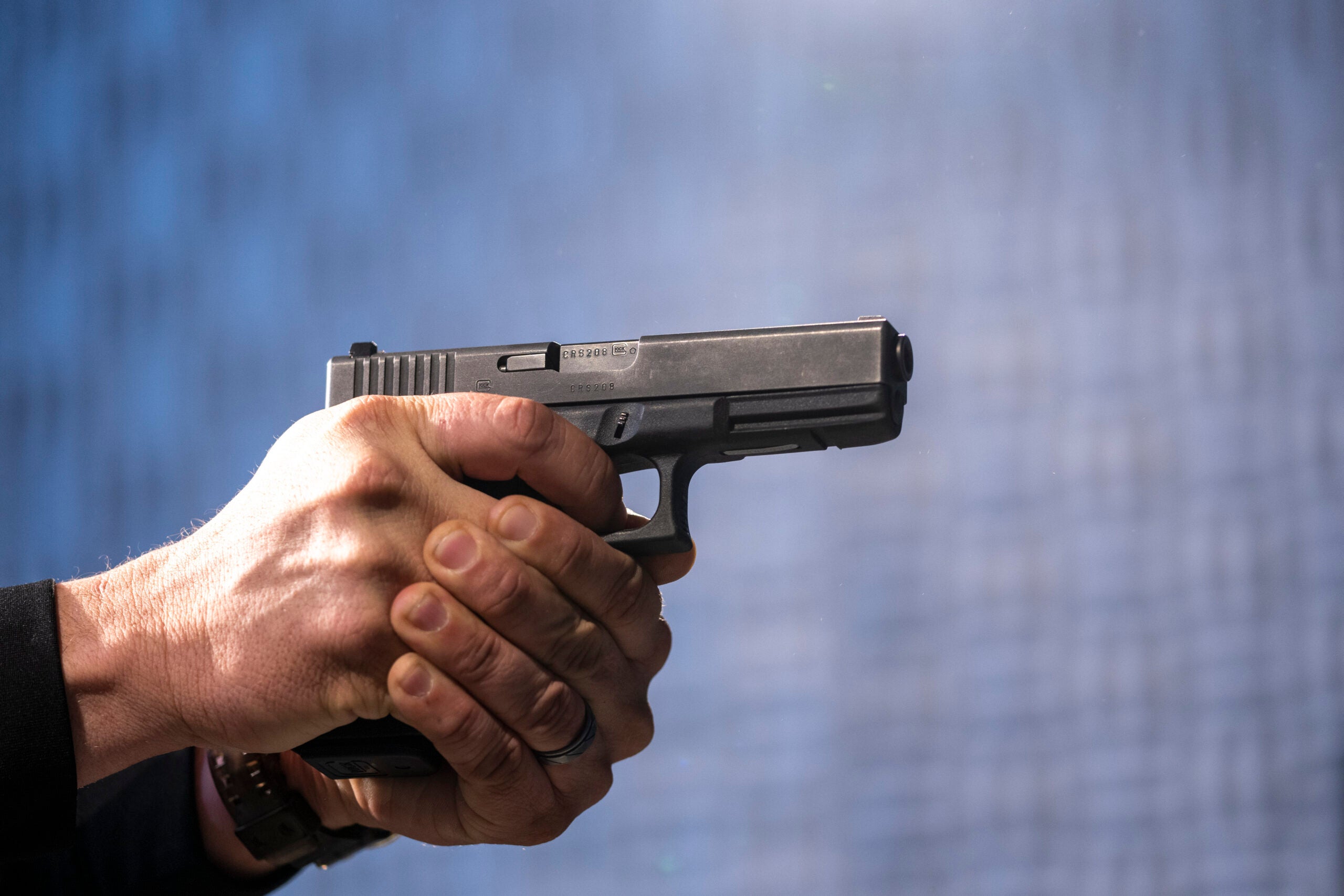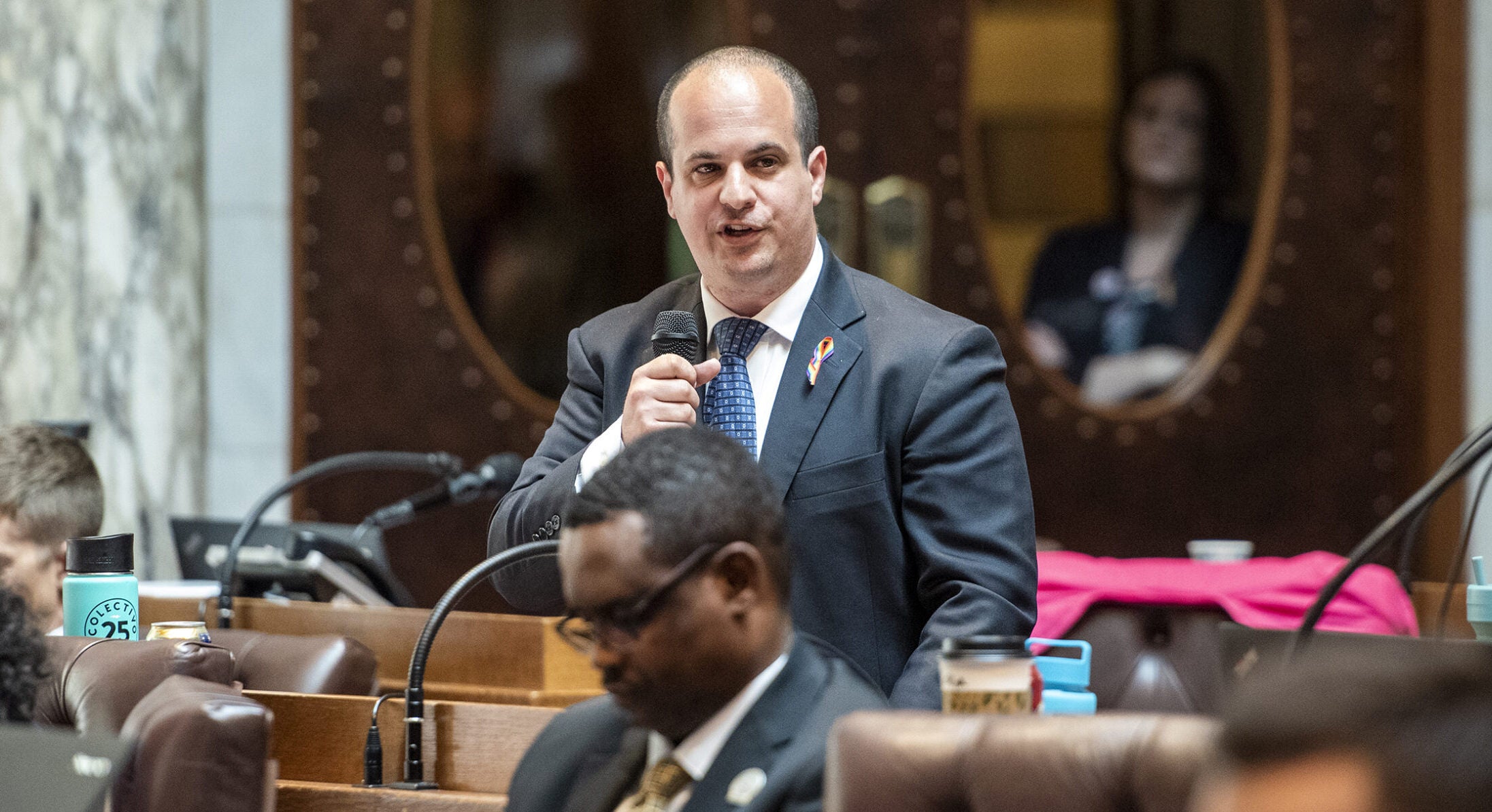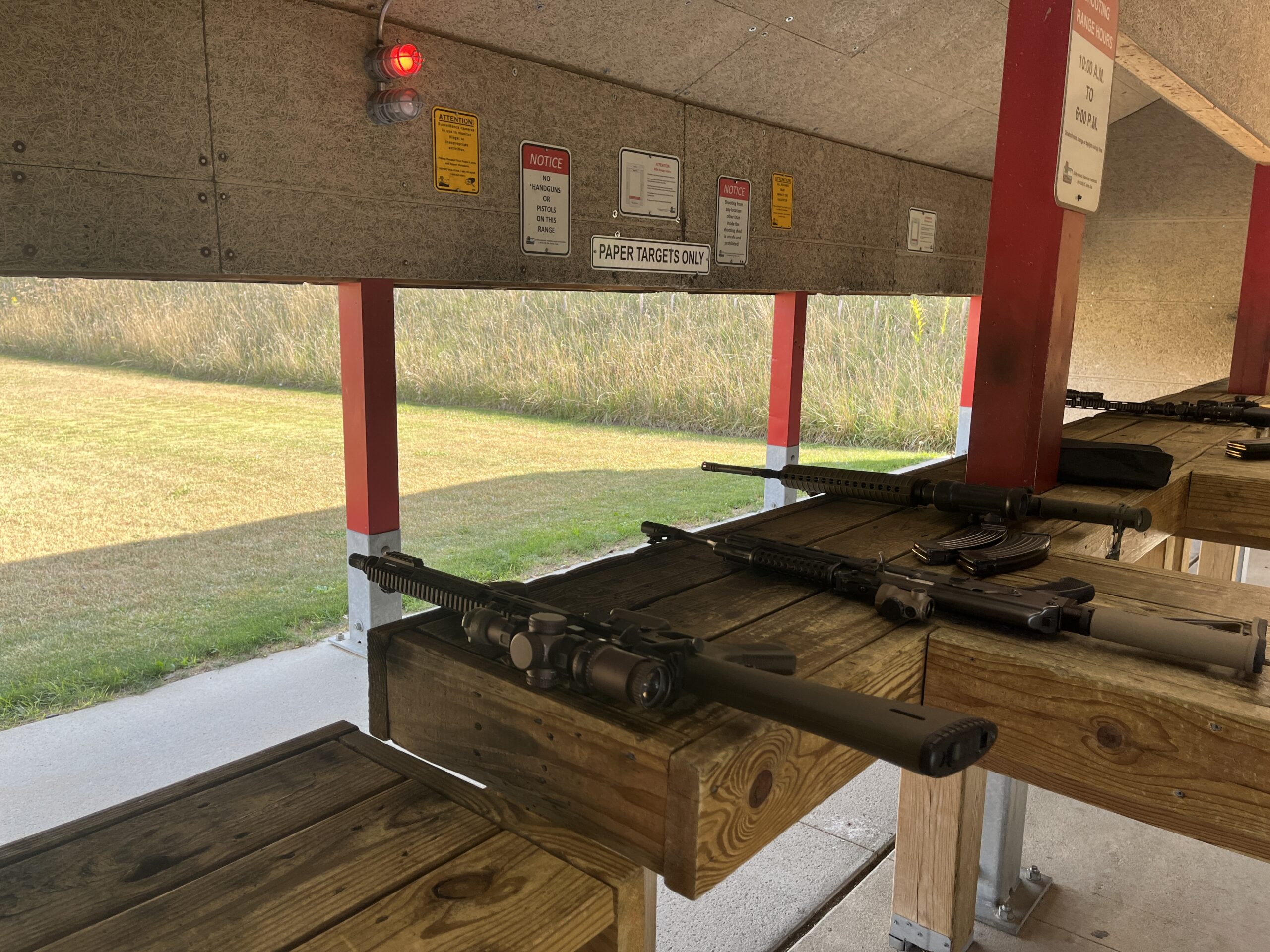Firearm deaths have risen consistently in Wisconsin every year since at least 2018, according to a new report.
The Wisconsin Anti-Violence Effort Educational Fund found that 830 people died in 2022 from guns in suicides, homicides or other ways, according to police data. That is the most recent year available for that data. In 2018, that figure was 598, and it rose every year.
Nick Matuszewski directs policy and programs at the WAVE Educational Fund. On WPR’s “Wisconsin Today,” Matuszewski said more guns mean more deaths from guns.
Stay informed on the latest news
Sign up for WPR’s email newsletter.
“There’s this talking point from the gun lobby that more guns make people more safe, but study after study has shown that the opposite is true,” he said. “And with more firearms in society, we have always seen that (it) raises the rate of firearm violence.”
The leading category for firearm deaths in Wisconsin is suicides, according to the report. Gun deaths from homicides went down slightly in 2022 but remained at a higher level than 2018-2020.
Firearm suicide rates by men have especially risen. Between 2002 and 2022, the death rate of Wisconsin men by suicide rose by nearly 50 percent. And the 2022 death rate of men is roughly six times higher than that of women.
On “Wisconsin Today,” Matuszewski discussed the rise in Wisconsin firearm deaths, preventative efforts and policy proposals.
The following interview was edited for brevity and clarity.
Kate Archer Kent: Can you put 830 Wisconsin residents killed by guns in 2022 into context? How do you view that number?
Nick Matuszewski: First of all, it’s obviously way too high. When we talk about the numbers from this report, I want to make sure that we realize that we’re talking about human lives. We’re talking about fathers, brothers, mothers, sisters, children. We’re talking about families that have been devastated for every single life that is lost. You’re talking about an entire community that has been forever changed.
And what this report doesn’t cover as much are firearm injuries that don’t result in death. So, it’s just important to ground that first and foremost. But to the question about how to visualize this … the rates have gone up each and every year since 2018. And we’re talking about almost over 100 people more over that time period per year.
So it’s obvious, and it should be obvious, that we have a serious issue in this state and in this country. We just need to make sure that we are focused on solutions.
KAK: Your report says the rate of firearm deaths in Wisconsin now outpaces the rate of deaths in car accidents. What is the state doing to address firearm deaths?
NM: Frankly, the state is doing far too little to address firearm deaths. And in fact, an argument can be made that at least for many of the folks in our state Legislature, they are trying to put forward bills that would increase the rates of firearm deaths.
I’m talking about things like arming more people in public, arming teachers at schools, allowing for firearms to be carried on church grounds that are attached to school campuses, removing other prohibitions on safe carrying of firearms and fighting us tooth and nail on every single proposal that we put forward.
What we know is that policies like universal background checks are widely supported. Policies like extreme risk laws, also known as “red flag laws,” are widely supported by Wisconsinites. And we’re talking 80 percent approval for both those policies. But for too long, too many of the folks in power, particularly those in the state Legislature, have refused to take action on these measures. And as I said, they’ve actually put forward policies that make our state less safe rather than more safe.
KAK: You mentioned red flag laws and universal background checks. Some other states have gone ahead with those types of laws. What do you see happening around us in neighboring states?
NM: You look at a state like Indiana, which is a conservative state, and yet they were one of the first states to implement red flag laws or extreme risk laws. We’ve seen their rates of suicide go down quite a bit.
It’s important to keep in mind that although these policies are often talked about in terms of how they would prevent mass shootings — as tragic and awful and preventable as mass shootings are — they are such a small percentage of the actual gun deaths in this country. The vast majority are suicides.
Laws like the extreme risk laws and numerous background checks, those are really, really effective at reducing rates of suicide and other types of firearm violence.
But suicide is really salient here to this conversation because a large percentage of the gun deaths in Wisconsin are from suicide. What we’ve seen is that when Indiana implemented that policy a few years back, their rates of suicide have decreased.
There’s a lot of talk about how Illinois and Chicago have high gun firearm violence. But really, when you dig into the data, not only are their rates of firearm violence a lot smaller than people like to portray in the media, it’s also the case that most of their firearms come from out of state. Most of their crime firearms are coming from places like Indiana, Iowa and Wisconsin.
KAK: We know that the data in your study is based on information that’s voluntarily submitted by police departments. Is this incomplete picture a problem when trying to find solutions to gun violence across the country and here in Wisconsin?
NM: What we’ve seen is that researchers have been limited in studies that they can do around gun violence and the solutions. They have been discouraged at the federal level from pursuing holistic pictures and data around this horrible, horrible issue.
This isn’t enough, but I am glad to say that the White House Office of Gun Violence Prevention announced just a couple weeks ago that they are partnering with the Department of Health and Human Services and others to ensure that, going forward, the data is more holistic.
It will need to include not just reports that are filed at the scene of a crime, but also in our hospitals and in other medical facilities across the country.
And it needs to include not just deaths by firearms, but injuries by firearms. We need to do as much as we can to paint the entire picture so that folks realize just how severe the situation is. That’s one step in the right direction.
But really, anything we can do to promote the full capability of researchers and statisticians and others to really paint the fullest picture possible on this, we should be doing.
If you or someone you know is considering suicide, call or text the three-digit suicide and crisis lifeline at 988. Resources are available online here.
